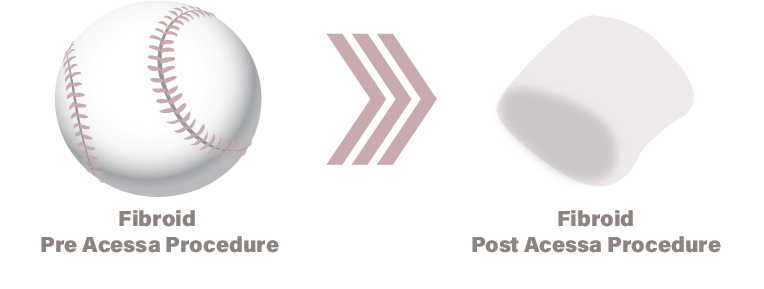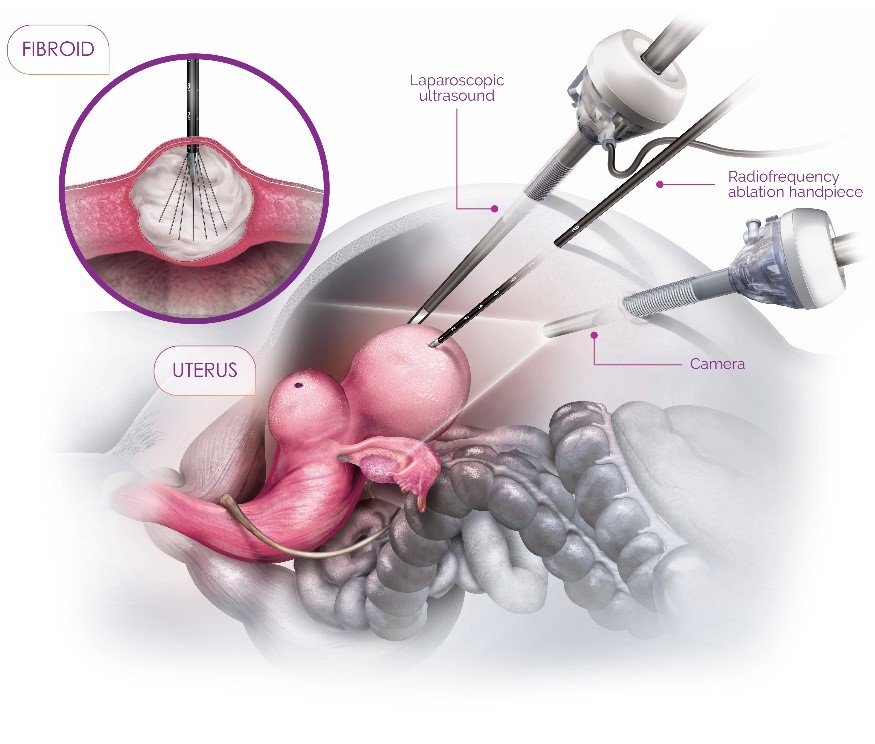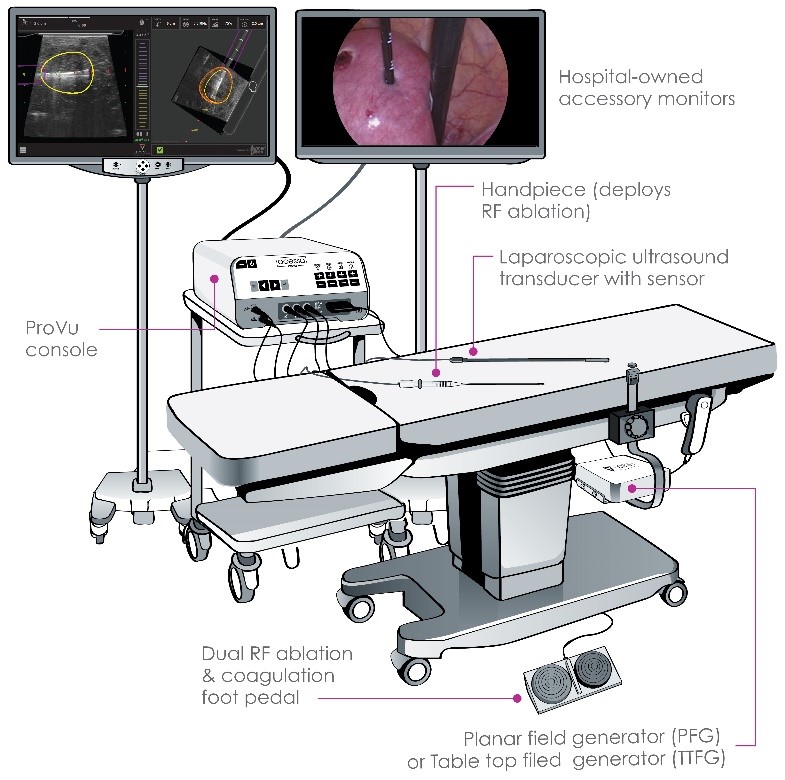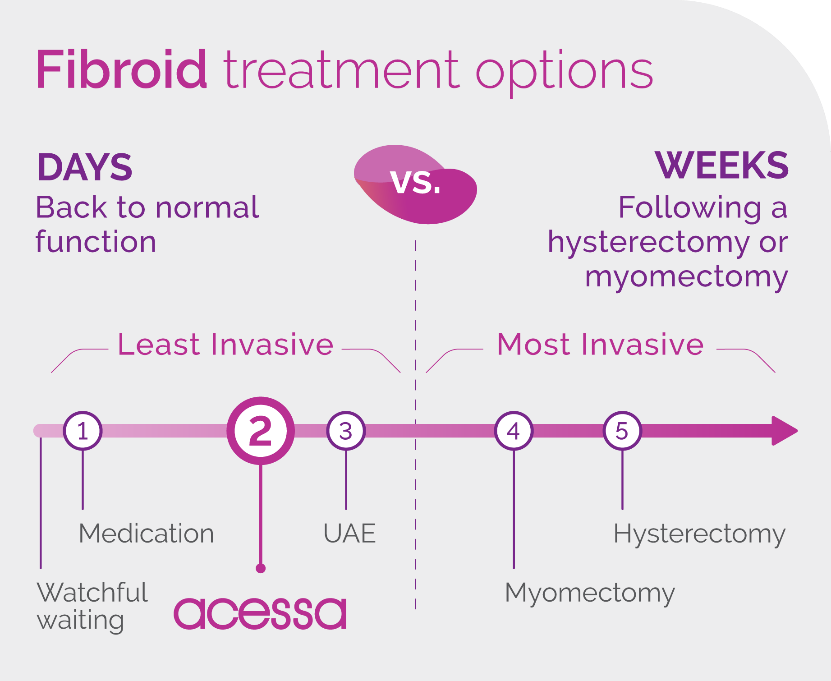FIBROID RADIOFREQUENCY ABLATION
Women with symptomatic uterine fibroids endure painful menstruation, heavy menstrual bleeding, abdominal distension, urinary frequency and pelvic pain. These symptoms often get worse over time, leading to a deterioration in quality of life and loss of normal function. In many cases, major surgery (hysterectomy) becomes the only option offered by physicians.
Now there is another option:
The FDA-cleared Acessa™ procedure.
How the Acessa procedure works
- The clinical terminology for the procedure is Laparoscopic radiofrequency ablation (Lap RFA) for fibroids.
- The Acessa procedure typically takes between 90 to 120 minutes depending on the size, location, and number of fibroids.
- Fibroids are heated, using radiofrequency ablation, to the point where they are destroyed and are no longer the consistency of a fibroid. The heat denatures the proteins inside the fibroid cells.

- The change in the consistency to a soft marshmallow and gradual shrinkage is what creates the relief from the fibroid symptoms.
- When the heated tissue shrinks into the marshmallow the reduced cells typically get recycled into the body. This is the same natural process the body uses when recovering from a scab.
- There is no incision within the uterus which allows the physician to spare the healthy tissue.


If the fibroids are not physically removed, how does Acessa work?
As a reminder, Acessa is a treatment for benign (non-cancerous) symptomatic fibroids. If patients are at risk for cancer, or malignancy, Acessa is not the appropriate treatment.
Studies show that fibroids do not have to be completely removed to solve symptoms. Killing the fibroid cells so they shrink and stop putting pressure on the uterus can solve symptoms. Physicians have explained that even a fractional reduction in fibroid volume can result in significant improvement in heavy periods, pelvic pain and bulk.
To summarize, Acessa works by heating the fibroid cells from the inside out, not by removing the fibroid. Cell tissues die when they reach a certain temperature. Acessa heats the fibroid tissue to the point that it dies. The dead fibroid tissue shrinks and shrivels. The dead fibroid tissue is not harmful. It gets absorbed by the body, just like any dead tissue cell.
The Acessa Procedure - Results
- Addresses nearly all symptoms such as excessive bleeding, prolonged periods, urinary frequency, painful sex, stomach, lower-back and pelvic pain. Individual results vary based.
- In clinical studies, there was an average shrinkage of 45% in fibroid size post-procedure. This number is contingent on where the fibroid is located and the size.
- Women typically see the most symptom improvement within 3 months of the procedure with continued improvement throughout the first year.
- Studies have shown both clinically and statistically significant reduction in period blood loss.
- Significant reduction in fibroid and uterine volume.
BY THE NUMBERS:
- 82% of women had lighter periods.
- 94% patient satisfaction rate.
- Only 11% of patients required additional reintervention after the Acessa procedure.



